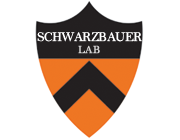Open-Spaced Ridged Hydrogel Scaffolds Containing TiO-Self-Assembled Monolayer of Phosphonates Promote Regeneration and Recovery Following Spinal Cord Injury.
Type
The spinal cord has a poor ability to regenerate after an injury, which may be due to cell loss, cyst formation, inflammation, and scarring. A promising approach to treating a spinal cord injury (SCI) is the use of biomaterials. We have developed a novel hydrogel scaffold fabricated from oligo(poly(ethylene glycol) fumarate) (OPF) as a 0.08 mm thick sheet containing polymer ridges and a cell-attractive surface on the other side. When the cells are cultured on OPF via chemical patterning, the cells attach, align, and deposit ECM along the direction of the pattern. Animals implanted with the rolled scaffold sheets had greater hindlimb recovery compared to that of the multichannel scaffold control, which is likely due to the greater number of axons growing across it. The immune cell number (microglia or hemopoietic cells: 50-120 cells/mm in all conditions), scarring (5-10% in all conditions), and ECM deposits (Laminin or Fibronectin: approximately 10-20% in all conditions) were equal in all conditions. Overall, the results suggest that the scaffold sheets promote axon outgrowth that can be guided across the scaffold, thereby promoting hindlimb recovery. This study provides a hydrogel scaffold construct that can be used in vitro for cell characterization or in vivo for future neuroprosthetics, devices, or cell and ECM delivery.

